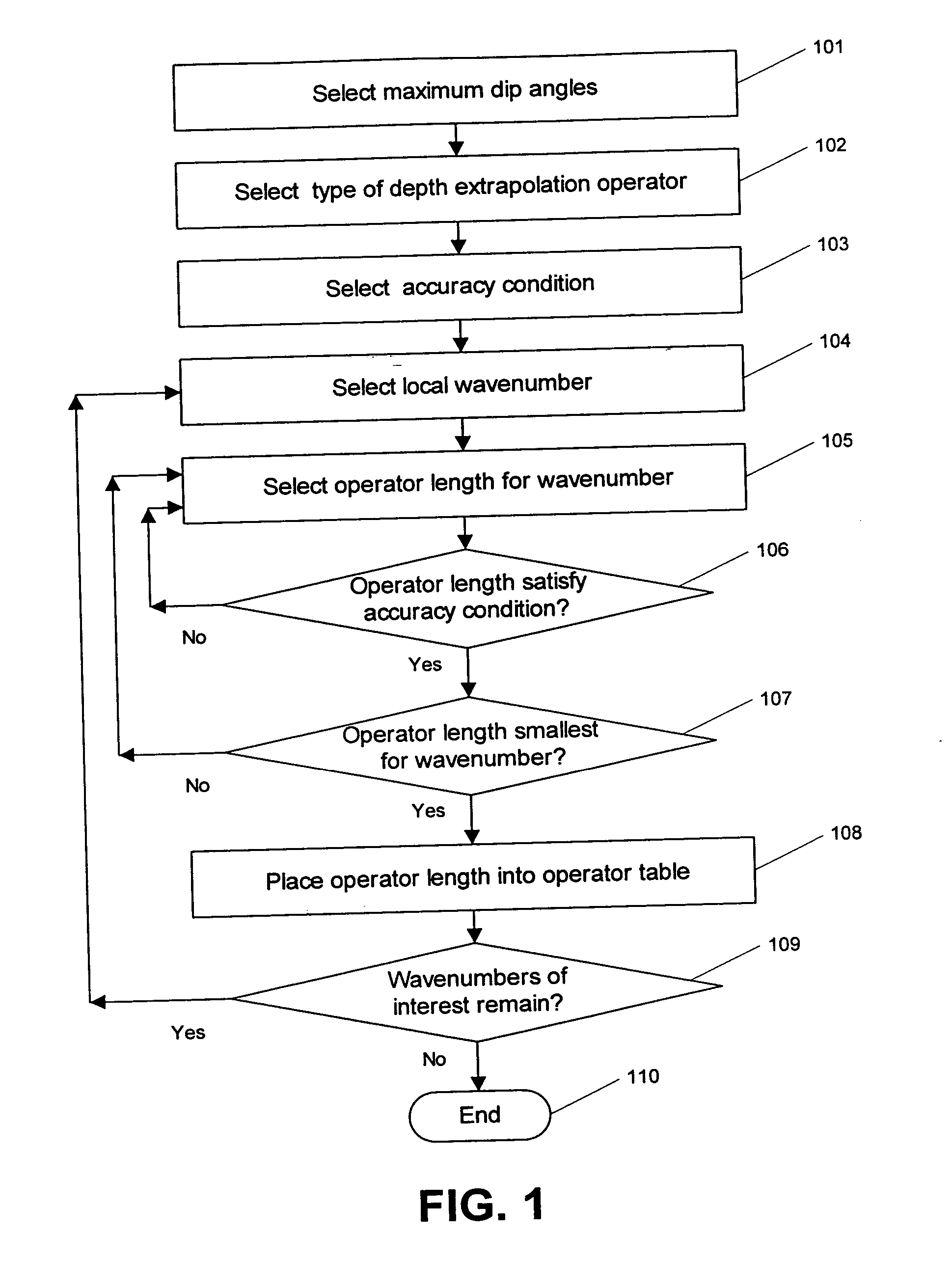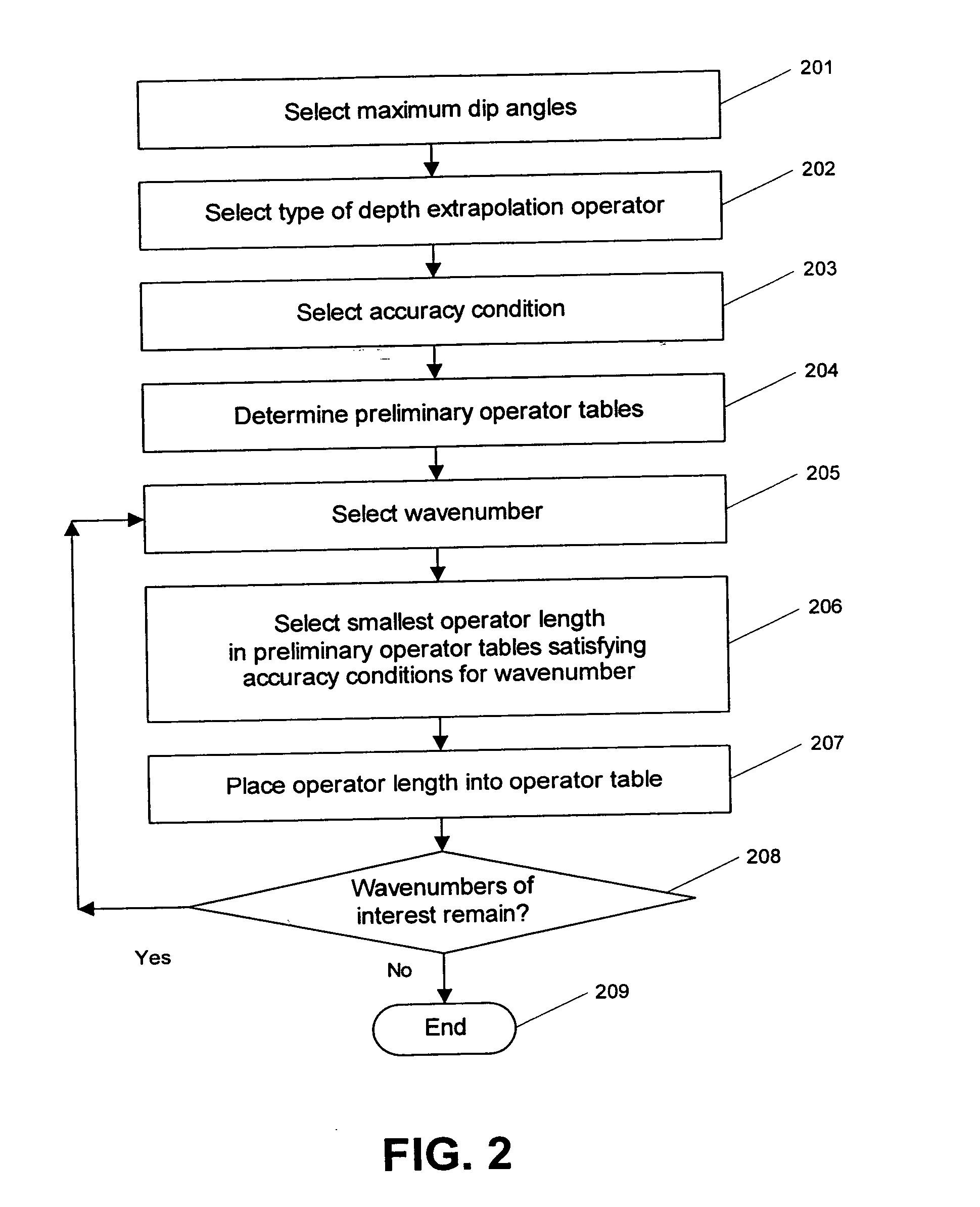Method for seismic migration using explicit depth extrapolation operators with dynamically variable operator length
a technology of operator length and operator length, applied in the field of geophysical prospecting, can solve the problems of computational cost of 3d seismic methods, difficulty in extending to the 3d case, and number of algorithms used in two-dimensional (2d) depth migration that have not been successful in the 3d cas
- Summary
- Abstract
- Description
- Claims
- Application Information
AI Technical Summary
Benefits of technology
Problems solved by technology
Method used
Image
Examples
first embodiment
There are several ways to obtain such operator tables. A first way to obtain the tables is directly in the operator optimization software. For each wavenumber kω, the strategy is to start with too low a value of the half-lengths L(kω) and M(kω), for the 3D case, or just the half-length L(kω), for the 2D case. Then the value of each half-length is increased with steps of 1 until proper convergence is achieved. This strategy is illustrated in FIG. 1, which shows a flowchart illustrating the processing steps of the method of the invention for constructing tables of explicit depth extrapolation operators with dynamically variable operator length.
At step 101, a maximum dip angle to be accurately migrated is selected. Alternatively, maximum dip angles to be accurately migrated are selected in both the x-coordinate and y-coordinate directions. Typically, the x-coordinate and y-coordinate directions are the in-line and cross-line directions, respectively, of a seismic survey used to collec...
second embodiment
A second strategy for obtaining an operator table starts with designing a suite of operator tables with half-lengths ranging from minimum to maximum values of the half-lengths L(kω) or M(kω), that have an error that is as small as possible for each wavenumber kω value. Then, for each kω value; scan the wavenumber response of this suite of operator tables with a fixed error criterion and accept the operator that has the shortest half-length with an acceptable error. In this way, a single new operator table with variable operator half-lengths L(kω) and M(kω) is synthesized from a suite of fixed length operator tables. This strategy is illustrated in FIG. 2, which shows a flowchart illustrating the processing steps of the method of the invention for constructing explicit depth extrapolation operators with dynamically variable operator length.
At step 201, a maximum dip angle to be accurately migrated is selected. Alternatively, maximum dip angles to be accurately migrated are selected ...
PUM
 Login to View More
Login to View More Abstract
Description
Claims
Application Information
 Login to View More
Login to View More - R&D
- Intellectual Property
- Life Sciences
- Materials
- Tech Scout
- Unparalleled Data Quality
- Higher Quality Content
- 60% Fewer Hallucinations
Browse by: Latest US Patents, China's latest patents, Technical Efficacy Thesaurus, Application Domain, Technology Topic, Popular Technical Reports.
© 2025 PatSnap. All rights reserved.Legal|Privacy policy|Modern Slavery Act Transparency Statement|Sitemap|About US| Contact US: help@patsnap.com



